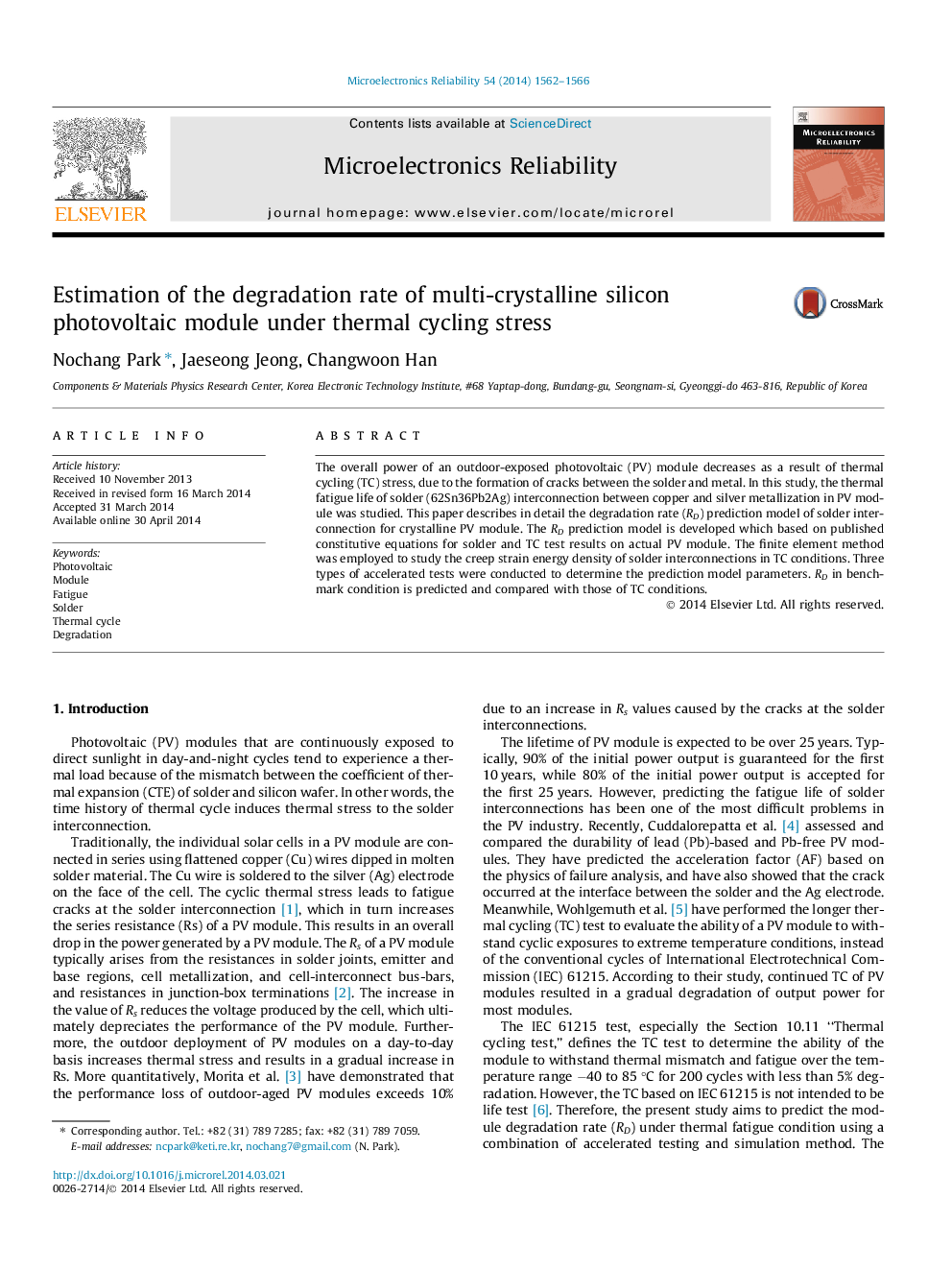| Article ID | Journal | Published Year | Pages | File Type |
|---|---|---|---|---|
| 544870 | Microelectronics Reliability | 2014 | 5 Pages |
•This paper describes the degradation rate (RD) prediction model of crystalline PV module.•The RD prediction model is developed which based on thermal cycling results.•The finite element method was employed to study the creep strain energy density of solder.•RD in benchmark condition is predicted and compared with those of accelerated conditions.
The overall power of an outdoor-exposed photovoltaic (PV) module decreases as a result of thermal cycling (TC) stress, due to the formation of cracks between the solder and metal. In this study, the thermal fatigue life of solder (62Sn36Pb2Ag) interconnection between copper and silver metallization in PV module was studied. This paper describes in detail the degradation rate (RD) prediction model of solder interconnection for crystalline PV module. The RD prediction model is developed which based on published constitutive equations for solder and TC test results on actual PV module. The finite element method was employed to study the creep strain energy density of solder interconnections in TC conditions. Three types of accelerated tests were conducted to determine the prediction model parameters. RD in benchmark condition is predicted and compared with those of TC conditions.
